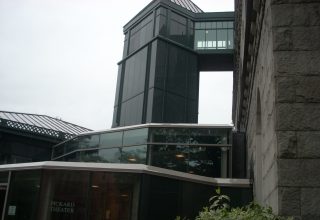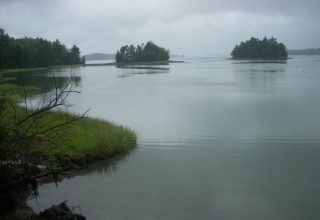
(excerpted from “Integral Leadership Coaching: A Partner in Sustainability” by Lloyd Raines, published March 2007, Integral Leadership Review.)
Every coach holds a particular framework when coaching, along with lenses that lay beyond our conscious awareness. For example, a coach may listen and observe primarily from a cognitive perspective.picking up on how language provides entry into the client’s interior world, thinking, assumptions, point of view, dominant stories, and insights into his or her interactions with others. Another coach may be naturally attuned to working from an emotional lens, sensing the degree to which the leader is emotionally self-aware, socially aware, and healthy in terms of self-care and social care. This emotional intelligence lens may bring significant focus to the leader’s capacity to harness social energy through emotional connections and the experiences that make those connections meaningful. Or the dominant coaching frame might be somatic, seeing the subtle and unmistakable ways that the inner world of a leader shows up in their bodies, movements, and energy. And so on for other significant frames . like gender, race, class, nationality, ethnicity, spirituality, sexual orientation, etc. We can see, in short order, how layered and inter-connected our lenses are, operating above and below our conscious awareness, shaping the ways we perceive, make sense of, draw meaning from, and engage in social life.
Coaches can be specialists or work holistically, partnering with leaders for specific improvements or to cultivate a more integral approach for congruence and enhanced effectiveness. (Note: I shall use the terms “integral” and “holistic” interchangeably.) Holistic leadership coaching holds a frame of reference that listens and observes for coherence that goes beyond the leader’s personal development. It includes how the leader affects the organization’s culture and the design and integrity of its systems and processes. Are the organization’s culture, systems, and processes, in fact, animating and reinforcing the attitudes, values, and behaviors that align with the organization’s vision and mission? Do the vision and mission align with the long-term social and ecological health and well-being?
Within each leadership coach’s conceptual framework is a set of stories informed by our biography, biology, culture, expertise, and education. It adds up to how we understand the world. Therefore, we have a particularly unique approach and style when we coach.a particular manner and focus to our curiosity and inquiry, how we challenge, evoke, sometimes provoke, and listen with discernment and non-judgment. In the process we build a useful body of distinctions, stay disciplined and purposeful in our conversations, while helping to stimulate further insights and capacities in the leader. As we coach, we encounter moments of new possibilities for leaders.moments that coaches call “openings”. These openings offer a mother lode of opportunities for growth and development, and sometimes a particular kind of growth will have transformative impact, with cascading benefits to other areas of their leadership effectiveness (not to mention benefits to family relationships and home life).
My experience in working with various coaching communities of practice suggests that each leadership coach evolved his or her expertise from one or several preferred quadrants from the integral model: 1) intrapersonal, 2) behavioral, 3) cultural, and/or 4) systems.
Depending on many factors, we find ourselves with a tendency to be attracted to using particular quadrants first and others to a lesser degree. We coach to our natural strengths. Yet, that may not be enough to serve leaders well. While focusing on two out of four basic dimensions (like the intrapersonal and behavioral) can result in valuable coaching and leadership results, it is less powerful than engaging with all four quadrants. With four quadrants in play, a holistic whole systems view emerges.
For me, my preferred quadrants were in the intrapersonal and systems quadrants. Not surprisingly, I chose to study psychology (focused on the intrapersonal and behavioral) at the undergraduate level and justice (intrapersonal, behavioral, and social systems) at the graduate level. Even though both my undergraduate and graduate studies included a behavioral focus, I was more drawn to the individual’s interior world and the systems that affected their behaviors. I approached behavioral riddles from the inside out and from macro institutional forces down to individual behaviors.
Early on, as a leadership coach, I began wondering how power, position, and privilege enhanced or got in the way of people’s development and contributions in social organizations. And, in a roughly analogous way, I wondered about the same thing for myself as a leadership coach. Also, I pondered the influence of power on dignity, respect, mutuality, reciprocity, fairness, and justice; and, finally, power’s impact on the nature, resilience, and durability of social relationships. But, later I became aware of the importance of the parts I had paid less attention to.culture and a more in-depth study of individual behaviors. Once I became cued in on the contributions of these other elements to the whole, I engaged in active study, training, and communities of learning to fortify my knowledge base. Culture became core in understanding how an organization reproduced itself (for good or ill) over time, and helped me to understand the behaviors of those inside that organization. Culture, I finally was able to see, contributed a valuable set of factors essential for a holistic understanding of how things worked.
When it came to sharpening my awareness around behaviors, I was surprised at the richness in nuances and distinctions I had previously overlooked. The body indeed expressed so much of the interior story that a trained eye could notice indicators of self-limiting or self-destructive thoughts and behaviors. A person’s interior world literally expressed itself in their somatic expressions (e.g., pace of movement, gestures, eye focus and movements, facial expressions, gait, subtle energy, posture, tone of voice, attentiveness, presence, balance). How additionally beneficial it was (for my clients and me) when I was able to include those observations in my approach.
In my coaching, what I may miss without an integral mindset, is the rich interplay of the leader’s interior experiences with their subtle behaviors with their impact on the organizational culture with the design of organizational systems – and how harmoniously (or not) they work together. And, I can miss the larger web of relationships and variables in extra-organizational systems and natural systems. When written out in this way, it may seem too big, all-encompassing. Yet, it is as intimate as the air we breathe, water we drink, food we eat, and longings we feel. Discovering ways to scale my coaching conversations from the personal to the larger global systems has been a matter of learning from experimentation and experience. And sometimes it has been rough around the edges as I learned to see and make transitions in a more organic way. Yet, like all things in life, it is an adaptive work in progress.
Coaching Through a Wide-Angle Lens
There are two cardinal truths that coaches know: 1) the client holds the requisite wisdom and expertise worthy of birthing whatever growth and development are called for; and 2) to be in shape to coach involves more than just calling on the coach’s intuition and capacity to ask good questions.
How do coaches stay in shape to coach? Like other professions and professionals, we attend learning forums, conferences, and seminars. We form study groups, communities of learning, take relevant formal post-graduate courses, and make other investments of time and money to stay abreast of theoretical advances, innovations of tools, and best practices. Plus, most of us are voracious readers. When gathering at some event, coaches’ talk often turns to “what are you reading that’s good?” Ask five coaches that question and you’ll likely hear excited chatter about five books or articles that they are in the process of reading. Leadership coaches read from the literature of the natural sciences, social sciences, humanities, and business. We read novels and poetry, too – anything that informs or inspires the spirit and provides insights into the human condition.
As my reading and study of the human condition has evolved, and my awareness continues to sharpen around the connections between things at the micro and macro levels, so does my appreciation for the potential scope of leadership coaching. A holistic approach to coaching (that scales to a global level) is not going to be every leader’s cup of tea. And I’m sure I’ve lost more than a few potential clients who wanted a more locally focused approach. On the other hand, I know there are other leaders who have chosen me as their coach because they were attracted to this kind of framework that includes the larger contextual considerations.
Is It Time for a Bigger Coaching Role?
Traditionally, coaching grew out of a focus on behavioral or performance-based goals. Little by little, with the deepening grasp of the rich intersections that informed and gave birth to coaching, coaching blossomed into more holistic awareness and inquiries. Goals shifted from achieving certain behaviors to appreciating and cultivating the interior world of clients, the culture they operated within, and the systems they tend and live within.
Nourished by integral forerunners like Chief Seattle, indigenous people (around the world), E.O. Wilson, Fritjof Capra, Francesco Varela, Humberto Maturana, Meg Wheatley, Elisabet Sahtouris, Al Gore, Peter Senge, Otto Scharmer, Peter Block, Ken Wilber and many others, an integral framework emerged. It offers a rich holistic lens for pragmatic leadership coaching. It is a well-balanced, aggressively engaged form of coaching which blends theoretical insights, scientific breakthroughs, practical explorations, and an applied awareness of stage development within a systems context.
Integral coaching is a fertile intervention when the coach carefully balances his or her own method of engagement between the art of coaching and the science of life. When coaches are artists, we are in the moment with the leader, open to any variation of thinking or acting, willing to engage in a bold and risky brush stroke outside the lines of convention, while trusting our intuition. When coaching as scientists, we know the data and science of social life, organizational life, business life, ecological life, global life, and are able to inquire, make declarations, or introduce provocations that help leaders to confront the short and long-term impact of their actions within the broader global realities and trends. We are better informed and equipped as coaches when we ponder the meaningfulness of the global story, and ask how these global facts map to our day-to-day conversations and actions.
Consider, for example, how the following statistics and trends from the book Natural Capitalism (Hawken, Lovins and Lovins, 1994, p. 4) may appropriately bear on the ways in which leaders lead and coaches coach. In the past half century, the world has a lost a fourth of its topsoil and a third of its forest cover. At present rates of destruction, we will lose 70 percent of the worldfs coral reefs in our lifetime, host to 25 percent of marine life. In the past three decades, one-third of the planet’s resources, its natural wealth, have been consumed. We are losing freshwater ecosystems at the rate of 6 percent a year, marine ecosystems by 4 percent a year. There is no longer any serious scientific dispute that the decline in every living system in the world is reaching such levels that an increasing number of them are starting to lose, often at a pace accelerated by the interactions of their decline, their assured ability to sustain the continuity of the life process. We have reached an extraordinary threshold.
Facts like these may be difficult to internalize meaningfully as a person, and tougher yet to operationalize in our coaching with leaders. Yet, these statistics and trends challenge coaches and leaders to bridge the meaningfulness of such potent information to our daily experiences. If leaders and coaches consider them the concern of others, then what are the implications of that? The facts before us challenge every profession and every citizen to determine whether to continue to externalize responsibilities for these conversations to other arenas (e.g., political, economic, religious, cultural, etc.), or to incorporate them into the fabric of daily life . at work and as citizens. What information is vital for us to pay attention to?
One of David Whyte’s poems (1999, p. 88) brings our focus back to fundamentals, helping us see the human element in this mesmerizing age of information.
LOAVES AND FISHES
This is not the age of information.
This is not
the age of information.
Forget the news,
and the radio,
and the blurred screen.
This is the time of loaves and fishes.
People are hungry, and one good word
is bread for a thousand.
What are the good words, loaves and fishes offered by leaders? And offered by coaches? I think there are many in our line of vision.prototype businesses that are loaves and fishes, holistic coaches that cross-pollinate stories from one company (or country) to the next as best practices. With business breakthroughs and transformations popping up faster than we can track and absorb them, it is exciting to try to stay abreast of trends and best practices of cutting edge businesses. “People are hungry, and one good word is bread for a thousand”. Here’s a good word: the trend worldwide is towards more socially and environmentally responsible corporations. And there are many transformations in how people are living and working that align with the historical longings for living harmoniously with each other and nature.
In 2004, nearly 1,800 transnational corporations (TNCs) or their affiliates filed reports on issues of corporate responsibility, up from virtually none in the early 1990s. With some 1,600 reports already filed for 2005.estimated at about 85.90 percent of the likely total.this trend is on track to grow. These responsibility reports, sometimes referred to as non-financial reports, cover everything from labor standards and impacts on local communities to toxic releases and greenhouse gas emissions. (Hawken, Lovins and Lovins, 1999, p. 4)
Where do we stand in terms of corporate and environmental responsibility in the United States? How are our corporations doing relative to the rest of the world?
Thus far, most responsibility reports are filed by European corporations. Of those produced between 2001 and 2005, 54 percent came from Europe, 25 percent from Asia and Australia, 17 percent from North America, 2 percent from South America, and 2 percent from Africa and the Middle East. (Worldwatch Institute, 2006)
There is much progress to be made in corporate consciousness. As the US government and businesses catch up, the awakening process will create new opportunities for holistically prepared coaches, too. To face our positive obligations as professionals and citizens, and to be morally engaged, coaches are called by the full reach of our professional standards to stay abreast of and lean into industry and global concerns, with a growing knowledge of integral approaches and best practices worldwide.
As coaches, and especially at the Master Coach (MCC) level, we can be expected to coach with more perspective, depth, courage, and compassion, from a perspective that bears witness to the health and well-being of larger social, economic, and environmental systems and trends in the world. Be clear, that stance is an agenda . one that is not an isolated look at individual behavior in the abstract, but one that is rich in its interpenetration with people and nature worldwide.
We live in a globally intimate, climate-changing, ecologically endangered, and socially unstable world in which we compete for limited resources. This is the world we live in, and, as coaches we can work within those realities with a sense of whether the leader’s development is towards greater health and well-being for stakeholders worldwide or towards more fragmentation and exploitation of some for the benefit of others.
And if an integral perspective has any worth beyond being a nifty organizing process for understanding phenomena from a systems perch, it is that at the heart of an integral perspective is a normative stake in the ground around the health, wellness, and the sustainability of people and living systems globally.
A Normative Stance within Leadership Coaching
Let me offer a few examples, grounded in the democratic values of fairness and equality, to illustrate this coaching normative stance. As a leadership coach, when I am in the discovery process during the first several sessions with a new client, I’m taking in a lot of data . reading, listening, observing. Much of the data comes from feedback instruments, performance reviews, and my interviews with my client’s stakeholders. I am also taking note of the broader context and social dynamics: the gender, race, and diversity make-up of the leadership team and broader organization
Twenty plus years ago, when I began my coaching career, the workplace was much less diverse. During those years, if the leadership team was all or nearly all one gender (usually men), one race (traditionally white), and one ethnicity (traditionally WASP), I not only noted this as relevant information, I spoke to it: “I’ve noticed that the leadership ranks here are overwhelmingly white and male. Is there an organizational story that goes with that?” “What might be some of the implications of a lack of diversity . for you, the organization, and your stakeholders?” “What might be some of the ways that bringing in a diversity of talents and perspectives, especially in terms of gender, race, and nationality, could bring additional benefits to leadership’s effectiveness and the organization’s esprit de corps?. “”What might be some of the messages sent throughout the culture of this organization by the make-up of the top leadership ranks here?” Or “If the organization wanted to expand its diversity of leadership, what might be some of the ways you could intentionally start to bring about that shift?” Let me ask you: are these appropriate questions to have been asking?
The point I am offering is that I was intentionally inquisitive and provocative in my questions to the leader, and doing so from a position of commitment to social health, diversity, and wholeness instead of being passive or timid about the reality in front of me. I was bearing witness to the experience of those who may have been culturally excluded and diminished, as well as bearing witness for the unrealized potential of the organization’s talent. It might be awkward and uncomfortable, but so be it. I do this in service to the leader and the organization as it lives within a richly diverse world. My assumption is that the lack of diversity is already awkward and uncomfortable throughout much of the rest of the organization . even if it is “accepted” as normal. As a coach, I’m just calling it into view and awareness – in a way that is respectful to the leader as well as to the people in the organization who would like to feel more visible, valued, and fairly treated.
Imagine this: you are working in an organization where the leadership is comprised of people of the opposite gender, another race, and ethnicity. Every day you have experiences of being treated as an outsider, excluded from important information and conversations, not seen at all or seen as different, less than, and not quite as capable as others. Imagine that you see a leadership coach going into the leader’s office for a bi-weekly coaching session. Are you hoping that the coach notices the lack of diversity and brings it up in conversation? What are the chances of that, especially if the coach mirrors most or all of the leader’s characteristics? If the coach did notice and chose to bring this to the leader’s awareness, what might be possible?
Coaches bring fresh eyes, hearts, and spirits to new settings when we work with leaders. And, as outsiders, we are able – even expected – to say what others might not be able or willing to say from within the organization. This gives us a unique position and enables us to voice what we see and hear in ways that shake things up. In a sense, coaches can help break the cultural trance that leaders get into after being in the same culture and relationships over time. We help them to think, see, and hear with fresh perspectives and access possibilities of who they might be.
At a Minimum: Do No Harm
Let’s take a look at the assumptions of this holistic story so far. One way to think of the core story is: “that which unites is sacred; that which alienates or divides is profane”. At a minimum, coaching and leading can be said to live by a common expectation: do no harm. In certain ways, this strikes me as an odd beginning point . a great distance from expressing respect and love for something or someone else, but it is a dividing line worth pondering. Even though this is a bare minimum condition, it would require substantial revisions in our relationships with nature.
Biologist Pepper Trail (2007) offers 10 principles for living in greater harmony with the earth. He calls the principles “The Earth Precepts”:
1. Honor the earth, upon which all life depends.
2. Consider the consequences of all environmental actions over at least a 100-year time frame.
3. Do not destabilize the earth’s atmospheric or aquatic systems.
4. Do not depend upon energy sources that cannot be replaced.
5. Do not remove living resources, including soil, trees, and marine life, faster than they can replace themselves.
6. Exploitation of the earth must be accompanied by restoration of the earth.
7. Preserve biological diversity.
8. Do not have more than two children.
9. Do not assert ownership over species or their genetic codes: they are not ours to claim.
10. Do not exempt corporations from the environmental precepts that individuals must follow.
Some of those 10 precepts may be easy to accept and support, while others may invoke push-back or pause. That’s a good start to a worthwhile conversation. Other internationally recognized sources have created their own operating principles for sustainable living, most notably Karl-Henrik Robert’s The Natural Step. (2007). These are attempts at identifying the governing principles for responsible living and sustainable living systems.
What other ways can we look at our operating principals for living? I have been strongly influenced by the words of Magaly Lara. What guides Magaly is the maxim (taught to her by her mother): “wherever I am, I try to do good”. Not be good, but do good. This is an action-oriented maxim. As an example, she offered, when she goes to the playground and sees another child playing alone while other children are playing nearby, she goes to the alone child and asks if they would like to play together. Magaly is 10 years old and lives from an open, empathic and helpful heart. I love when she visits and I learn from our conversations. She is always reading and regularly pondering the nature of things. It would be easy to say she’s an old soul. Yet, moreso, I think that she has learned from her mother’s Nicaraguan culture and spiritual beliefs about empathy for others. Magaly shared with me her belief that she is ready to reach out to anyone in need. This basic connection with others connects her to herself and her to others in beautiful, powerful ways. At her young age, she knows who she is and wisdom radiates from her heart and eyes. Buddhists might say she is in “right relationship” with herself and the world.
How might we choose to act in right relationship with the Earth?
Download Article 1K Club


















